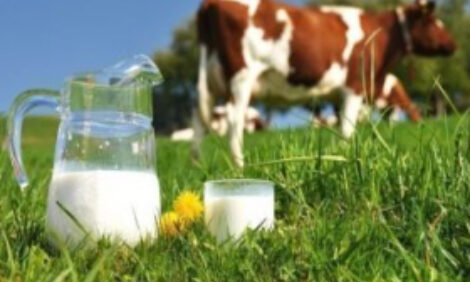



Beef Feedlot Water Issues during Winter Conditions
Many feedlot owners have experienced cold snaps in which sources of water can freeze and pipes can block. Roger Ellis, SDSU Extension Beef Feedlot Field Specialist has advised that cold weather requires caution to avoid decreases in productivity.
Winter conditions in beef finishing feedlots are challenging in regards to all aspects of people, animals, and environmental management. In the Northern Great Plains, feedlot operations expect to face these challenges regularly and employ strategies to overcome the cold, wind, and snow that invariably “bite” us.
The effects of extreme cold temperatures, wind chills, and deep snow/ice/mud on beef cattle are well documented. The adaptation response of cattle is to redirect energy utilization or expend body reserves towards heat production, and thus the requirements for energy increase. To achieve this, beef feedlot cattle need to increase feed intakes. With cold winter conditions, feed intakes will generally increase 5-25 per cent if feed is available.
Demand for energy is the primary nutrient required, however, the optimal ration should remain balanced with protein, vitamins, minerals, and roughage needs. This brings the discussion to the most essential nutrient for all animals that must be addressed: water. Water availability during winter months may be as big of a challenge unless good planning, facility design, and good management practices are attended to.

Water requirements during colder conditions are generally about half of the needs of cattle during summer heat periods. Feedlot cattle, calves, and yearlings generally require 5 to 10 gallons per-day in conditions with temperatures < 70 °F. During periods of extreme cold and wind, cattle will actually reduce water intakes and rehydrate when conditions become more comfortable. If water is less available due to freezing or inaccessibility, cattle will require additional intakes and time to replenish. Prolonged unavailability of water will be life-threatening.
The point that is critical becomes apparent. As cattle require increased feed intakes during severe winter conditions and water intakes may be reduced, what is the result of this relationship? Feed intake is positively correlated to water intake, so if water intake is restricted or reduced, then feed intakes will be limited. Rate of feed passage may also be increased, leading to reduced digestibility.
The end product of this equation will be inadequate energy intake to meet the increased requirements, resulting in reduced gains and poorer feed efficiency. These are the three principal objectives that need to be maximized to maintain high productivity and profitability. Studies on this relationship and effect are sparse; however, estimates suggest ADG and feed efficiency may see reductions of 10-20 per cent .
With this awareness, feedlot operations need to pay high attention to water management during winter seasons. In particular, continuous availability of clean water is important and limiting the freezing of water sources is paramount. Commonly, automated water systems are provided with heating units to prevent or minimize freezing. These units should be checked daily or more often during extreme conditions to assess their function.
The water sources should be cleaned of ice, snow, and mud frequently and the surrounding pad or ground surface should be managed to allow continuous and sound access to the waterers. With electric heating units, close observations for malfunction or stray voltage should be done. In the event of an emergency water outage, auxiliary water supplies should be provided. A good source of information regarding feedlot water systems is the “Beef Housing and Equipment Handbook” (MidWest Plans Service, Iowa State University, 1987).
Figure 1: Energy Balance in Relationship to Climatic Temperatures (Adapted from NRC, 1981)

Above: Relationship of feed intake and maintenance requirements to temperature.
Successful feedlot operations plan and have protocols in place for water systems and providing water for cattle during all seasons. Winter conditions often tax these plans and require close, frequent observation and actions. The performance, health, and well-being of the cattle are crucial and the bottom-line of performance and profitability is at stake.
March 2013


